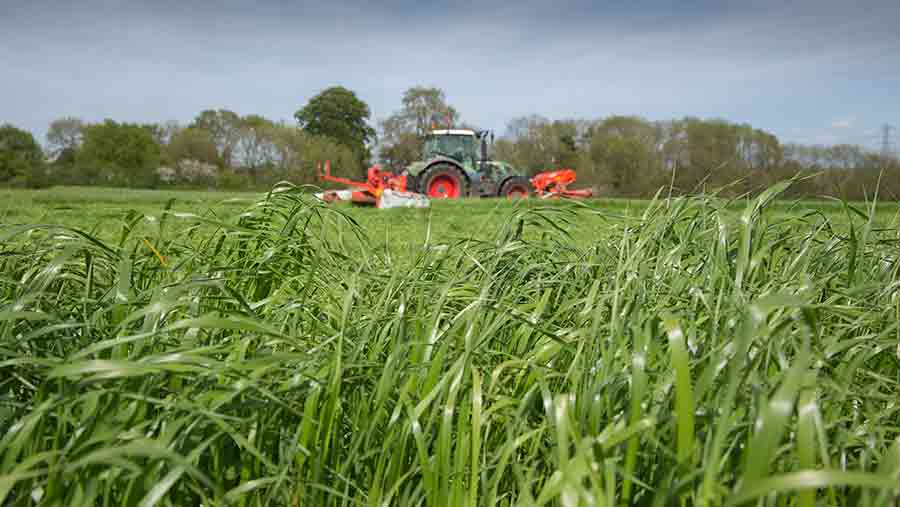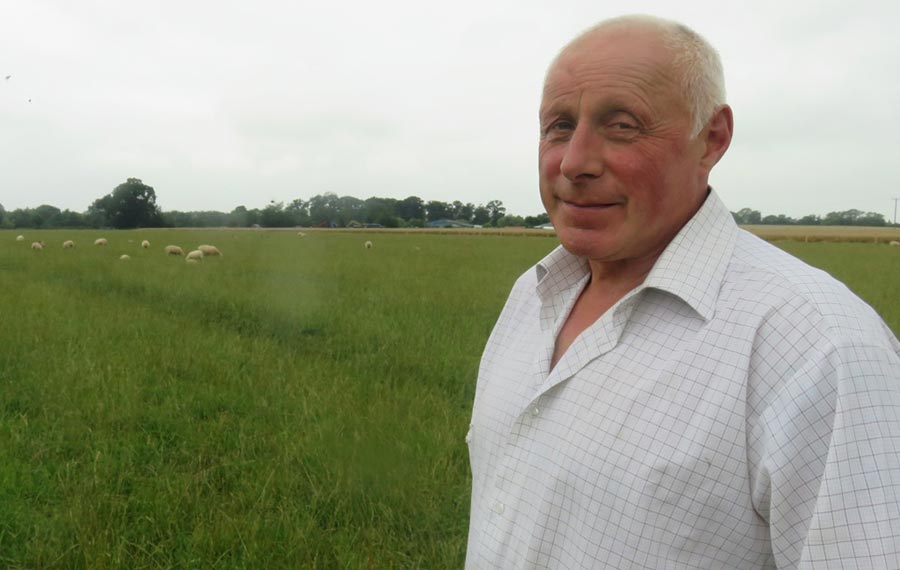How to tackle the crown rust gripping the South
 © Tim Scrivener
© Tim Scrivener Farmers are urged to mow fields infected with crown rust to get on top of the fungus that is infecting many farms.
Many grass fields across the southern half of Britain have become infested with crown rust due to warm and humid weather conditions that have helped the fungus, Puccinia coronate, take hold.
See also: 7 tips to increase grass yield and quality
Mild winters make the situation worse, says Rod Bonshor, general manager for Oliver Seeds.
Infected fields, where your boots turn orange after walking though them, should be mown to remove any seed heads and diseased material.
He says “Then a tickle of nitrogen should be applied – 38-40kg/ha will be enough to get fresh growth going again. The animals can then come back in and graze for the rest of the autumn.”
Farm case study
Ian Hudson has a field suffering with crown rust on his 204ha farm at Upper Dean in Bedfordshire.
Mr Hudson grows grass in rotation with spring-sown heritage oats. Five hundred composite ewes with their lambs and 60 head of cattle made up of suckler cows and calves, rotationally graze 5ha paddocks during the grazing season, until the heavy clay soils force them indoors for winter.

Ian Hudson in the field that yielded 16t/ha seven-and-a-half months after sowing
“I do a lot of reseeding on my own farm and for other farmers locally,” explains Mr Hudson. “Because the conditions can be tricky here I tried a different grass blend and the mix of different grass species has really done well.
“There was a flush of grass in November and December and then the River Til, which flows right along the field, flooded and for weeks the ground was under water. I thought it was a disaster and I would have to drill it again,” admits Mr Hudson.
“But I couldn’t get near it because it was so wet. Then in the cold, dry spring there wasn’t much growth – but come April and May it grew at a tremendous pace.”
What the blend includes
Perennial ryegrass, festulolium, cocksfoot, meadow fescue and timothy with white clover and birdsfoot trefoil
Mr Hudson runs a low-input system and after the oats have been combined and the soil ploughed and leveled, the grass seed is blown onto the field and rolled to achieve good soil contact.
Seed-bed fertiliser of 250kg/ha is applied, with no further fertiliser applications.
Silage was cut on 1 June and cattle grazed the aftermath before the sheep came in on a 21-day rotation.
“It has had a very tough first year,” says Mr Hudson. “Yet it has yielded 16t/ha of grass silage cut at the end of May. This was more than double any previous new ley had produced.
“The meadow fescue and timothy are early growers and the additional bulk came from the festuloliums and ryegrass.”
